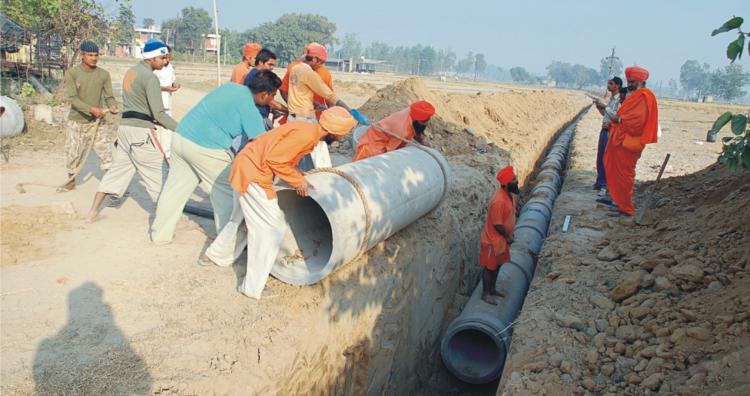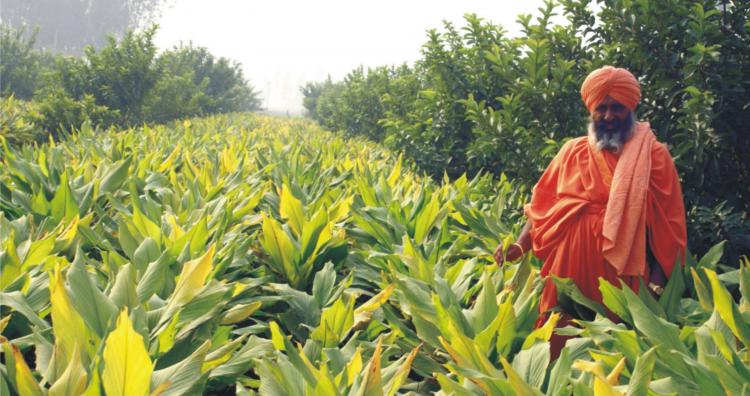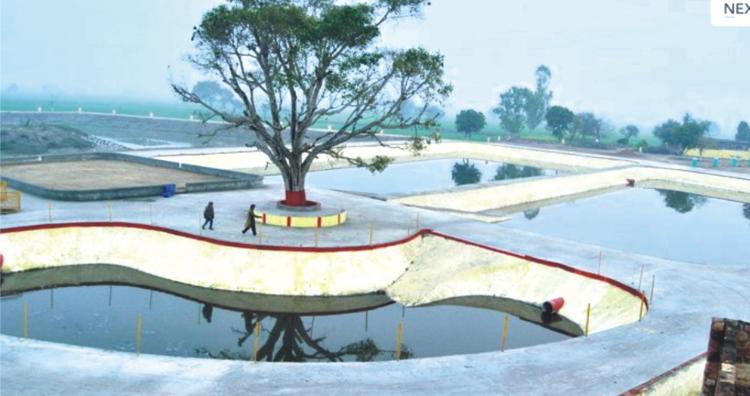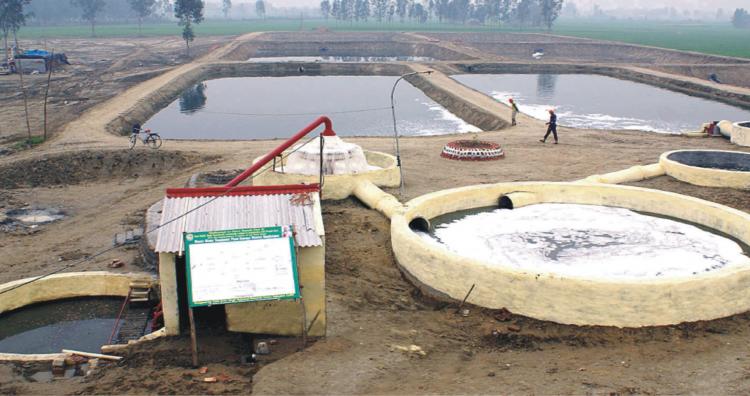
Dirty effluents posed a great problem in restoring the purity of the Holy Bein. To tackle this problem, at Sultanpur Lodhi, the sewage treatment plant was restored, 8 kms-long underground pipelines were laid in order to supply the treated sewage water for agricultural use by which natural farming is now being promoted. 
Treated sewage water of Kapurthala town is also being supplied for use in agriculture on the same pattern.  Dirty sewage water of Dasuya town in Hoshiarpur District, which had been contaminating the Holy Bein, is now being used for bringing prosperity in 5 kms of agricultural land after treatment.
Dirty sewage water of Dasuya town in Hoshiarpur District, which had been contaminating the Holy Bein, is now being used for bringing prosperity in 5 kms of agricultural land after treatment.
 In about 40 villages situated along the Holy Kali Bein river, ponds and tanks have been prepared to collect the sewage waters for simple treatment and pipelines have been laid for supplying the treated water to the farmers for irrigating their crops. In all this, consumption of water, chemical fertilizers and electricity have much diminished, resulting in much economic gain to the farmers. In the agricultural countries like India, treated sewage waters can prove a great boon.
In about 40 villages situated along the Holy Kali Bein river, ponds and tanks have been prepared to collect the sewage waters for simple treatment and pipelines have been laid for supplying the treated water to the farmers for irrigating their crops. In all this, consumption of water, chemical fertilizers and electricity have much diminished, resulting in much economic gain to the farmers. In the agricultural countries like India, treated sewage waters can prove a great boon. 
